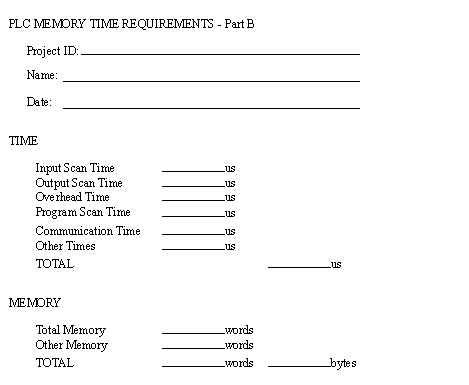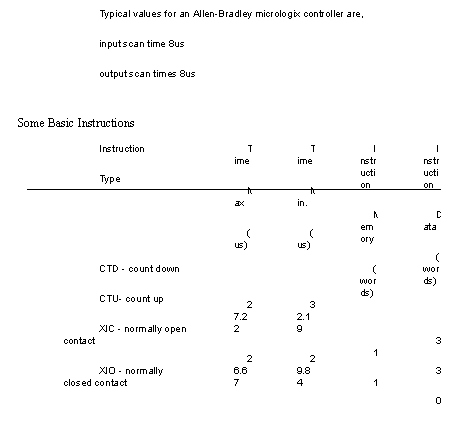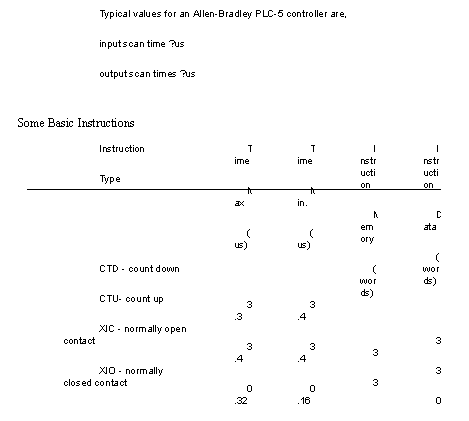1. SELECTING A PLC• Before a machine can be built, suitable components must be specified and ordered. • Criteria for evaluation can be listed - # of inputs/outputs (digital) - Memory - Often 1K and up. Need is dictated by size of ladder logic program. A ladder element will take only a few bytes, and will be specified in manufacturers documentation. - # of I/O modules - When doing some exotic applications, a large number of special add-on cards may be required. - Scan Time - The time to execute ladder logic elements. Big programs or faster processes will require shorter scan times. And, the shorter the scan time, the higher the cost. Typical values for this are 1 microsecond per simple ladder instruction - Communications - Serial and networked connections allow the PLC to be programmed and talk to other PLCs. The needs are determined by the application. - Software - Availability of programming software and other tools determines the programming and debugging ease. • To select a PLC the basic steps are, 1. Understand the process to be controlled (Note: This is done using the design sheets used in the labs.) - list the number and types of inputs and outputs. - determine how the process is to be controlled. - determine special needs such as distance between parts of the process. 2. If not already specified, a single vendor should be selected. Factors that might be considered are, (Note: Vendor research may be needed here.) - support while developing programs - the range of products available - support while troubleshooting - shipping times for emergency replacements - the track record for the company - business practices (billing, upgrades/obsolete products,etc.) 3. Plan the ladder logic for the controls. (Note: Use the standard design sheets.) 4. Count the program instructions and enter the values into the sheets below. Use the instruction times and memory requirements for each instruction to determine if the PLC has sufficient memory, and if the response time will be adequate for the process. 



5. Look for special program needs and check the PLC model. (e.g. PID) 6. Estimate the cost for suitable hardware, programming software, cables, manuals, training, etc., or ask for a quote from a vendor. 1.1 SPECIAL I/O MODULES1.2 PLC PROGRAMMING LANGUAGES1.3 ISSUES1.4 PRACTICE PROBLEMS |